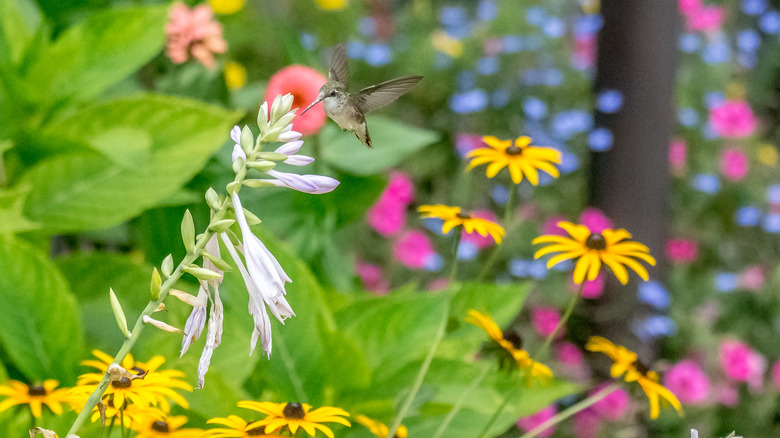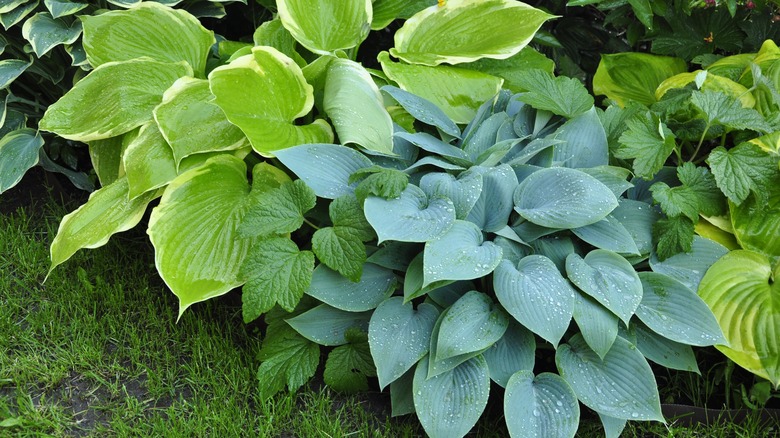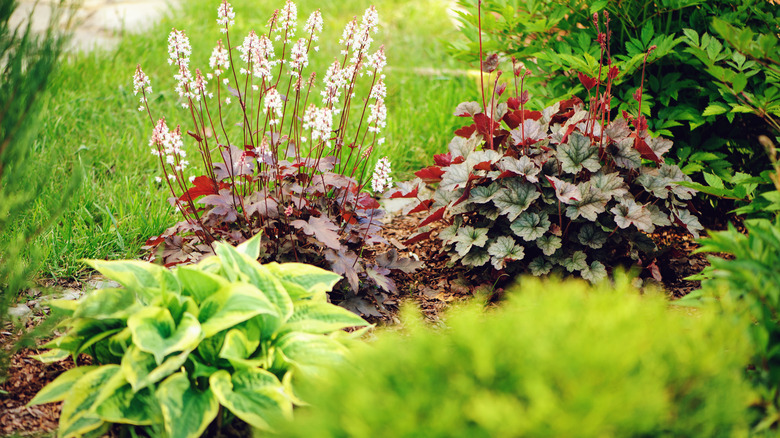The Hummingbird-Attracting Benefits Of Planting Hostas In Your Garden
When you think of hostas, you probably think of big, beautiful leaves that bring elegance and color to shade gardens. This is certainly true thanks to hostas' foliage — which comes in shades of green, chartreuse, and even blue — but hostas are more than their lush leaves. Considering how beautiful the leaves are, it's easy to forget that hostas also have charming flowers that emerge out of the foliage on tall stalks. These nectar-filled flowers are beloved by hummingbirds and other pollinators and can help turn a shade garden into a hummingbird garden.
Despite how appealing hosta flowers are to hummingbirds, bees, and butterflies, many gardeners are less enthused with the flowers and prefer to cut them off before they bloom. At one point, Iowa State University diplomatically noted that "gardeners are often conflicted about the beauty of hosta flowers." While beauty is subjective, hosta flowers are such a hit with hummingbirds thanks to their tubular shape and rich nectar that it's worth leaving them on the plants to encourage hummers to grace your yard with their presence.
Caring for hostas
Most species and cultivars of hostas are hardy in zones 3 through 9 and need a winter cold period to grow well, though the exact number of chill hours required varies by species. Perfect plants for deep to partial shade gardens, hostas can develop leaf burn if they're exposed to too much sun but are generally able to handle some gentle morning rays and may even bloom better with some sunlight. Hostas also prefer rich, well-draining soil with a neutral to acidic pH. While you can divide them, it is not required, and failing to divide your hostas every few years won't harm the plants.
Hostas require about an inch of water per week to grow their best, but once established, they can be relatively drought tolerant, especially if they are in a sufficiently shaded area. Mulching around your hostas also improves their drought tolerance by limiting water lost to evaporation. While hostas are relatively trouble-free plants, deer, rodents, and rabbits consider them delicious. Failing to account for hungry forest critters is a mistake that is sure to kill your hostas.
Using hostas to create a hummingbird shade garden
Depending on their species, hostas can flower and send up stalks of their often-fragrant blooms any time between late spring and autumn. These flowers can be purple or white and often last for weeks. While hummingbirds love the shape of these flowers, they may need some help to find them since neither hosta leaves nor flowers come in red, the color you should add to your garden to help attract hummingbirds. While you could use a red ribbon to attract hummingbirds to the plants, an easier option is to just grow red flowers around your hostas.
Some of the best shade perennials, including astilbe and coral bells (Heuchera spp.), come in shades of red. This includes the red fanal astilbe variety, which thrives in zones 4 through 8, and the forever red cultivar of coral bells, which doesn't just have red flowers but also boasts red leaves and grows beautifully in zones 4 through 9. Both plants make perfect companions for hostas. These bright red beauties are themselves popular with hummingbirds and planting them near your hostas will ensure the little birds don't accidentally pass those flowers by.


